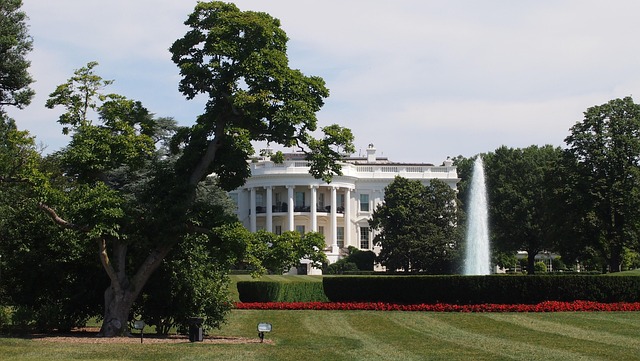The Future of Subsidies in a Changing Economic Landscape
Subsidies have long been a cornerstone of economic policy and development in countries around the globe. They are financial interventions provided by governments to support sectors that are deemed important for economic growth, social welfare, or environmental sustainability. However, as the economy continues to evolve in response to global challenges, technological advancements, and shifting societal values, the future of subsidies is becoming increasingly complex. This article delves into the potential future of subsidies, examining the ongoing trends, challenges, and opportunities that lie ahead.
The Role of Subsidies in Modern Economies
Subsidies can take many forms, including direct financial grants, tax rebates, and price controls. They are utilized across various sectors, including agriculture, renewable energy, technology, and healthcare. By providing financial assistance, governments aim to:
- Promote economic stability and growth
- Support emerging industries
- Ensure food security
- Encourage research and development
- Facilitate access to essential services like healthcare and education
In a time of significant change, it is vital to reconsider how these policies are structured and implemented in response to new economic realities.
Shifts in Global Economic Paradigms
The landscape of the global economy is evolving due to multiple transformative factors. Understanding these shifts is essential to envisioning the future of subsidies.
Climate Change and Sustainability
The urgency of addressing climate change has prompted governments to rethink their subsidy programs. Traditionally used to support fossil fuels, subsidy structures are now increasingly being redirected toward sustainable industries. Renewable energy, electric vehicles, and sustainable agriculture are examples where subsidies may flourish in the future.
Countries are faced with the challenge of transitioning away from carbon-intensive practices while ensuring that such transitions do not lead to economic dislocation. This balancing act necessitates a re-evaluation of existing subsidy frameworks to prioritize environmental sustainability.
Technological Advancements
The rapid pace of technological innovation presents both challenges and opportunities for subsidy programs. Automation, artificial intelligence, and digitalization are transforming labor markets, often rendering traditional jobs obsolete. As a result, there is a growing need for governments to implement targeted subsidies aimed at workforce retraining and development to prepare individuals for new roles in the changing economy.
At the same time, technology may streamline the delivery and management of subsidies themselves, enhancing efficiency and accessibility. Digital tools can facilitate better targeting of subsidies to those who need them most, reducing waste and improving outcomes.
Globalization and Trade Dynamics
Trade dynamics continue to shift due to globalization, geopolitical tensions, and evolving economic alliances. In this context, subsidies can become contentious, particularly when nations accuse one another of unfair trade practices. Governments must navigate this intricate landscape carefully, balancing the need for domestic support with the pressures of international trade agreements.
As the world becomes more interconnected, multilateral cooperation in shaping subsidy policies will be essential to prevent trade disputes and promote fair competition in the global market.
Challenges Ahead
While the future of subsidies holds promise, it is not without significant challenges. To effectively adapt to a rapidly changing economic landscape, policymakers must confront several key issues.
Efficiency and Effectiveness
One of the primary challenges is ensuring that subsidies are efficient and effective. Often, well-intentioned subsidy programs can become bloated and misallocated. Transparent evaluation mechanisms must be developed to assess the impact of subsidies, ensuring they achieve their intended outcomes and do not disproportionately benefit certain stakeholders.
Equity and Accessibility
Equity is another critical concern. As governments allocate resources for subsidy programs, they must ensure that the benefits are distributed fairly across different demographics and geographic regions. Disadvantaged communities might need targeted support to ensure they are not left behind in new economic initiatives. Subsidy programs must be designed with inclusivity in mind.
Fiscal Constraints
Fiscal constraints pose a significant barrier to expanding subsidy programs. As countries navigate rising debts and deficits, the sustainability of subsidy programs becomes a pressing concern. Governments will need to scrutinize their budgets, finding innovative financing methods while maintaining a commitment to essential subsidies. Collaboration with the private sector and non-governmental organizations (NGOs) can play a significant role in this regard.
Opportunities for Reimagining Subsidies
Despite the challenges, there are numerous opportunities for reimagining subsidies in light of the changing economic landscape. By adopting innovative approaches, governments can create subsidy programs that not only respond to current needs but also anticipate future trends.
Green Subsidies for Sustainable Development
As governments race to meet climate goals, opportunities abound for “green” subsidies that promote sustainability. Transitioning to renewable energy sources, investing in green technology, and fostering sustainable agricultural practices present avenues for substantial economic growth. Such subsidies can catalyze job creation while addressing the pressing challenge of climate change.
Human Capital Development
Investing in human capital through education and skills development subsidies will be crucial in a world increasingly dominated by technology. By providing financial assistance for vocational training and reskilling programs, governments can enable workers to transition into in-demand sectors. Such investments will not only benefit individuals but will also enhance overall economic resilience.
Dynamic and Adaptive Policy Frameworks
Subsidy frameworks must evolve to respond dynamically to economic changes. Flexible policies that can adapt based on real-time data and insights will be crucial in ensuring efficacy. Embracing digital innovations will allow for a more precise allocation of funds and facilitate quick responses to emerging economic challenges.
Conclusion
The future of subsidies in a changing economic landscape is fraught with both challenges and opportunities. As the global economy faces unprecedented shifts driven by climate change, technological advancements, and evolving trade dynamics, policymakers must rethink traditional subsidy structures. By focusing on sustainability, equity, and effective governance, governments can evolve their subsidy programs into powerful tools for driving economic growth, promoting social equity, and ensuring environmental sustainability.
Collaboration across sectors, along with a commitment to innovation and flexibility, will be essential in navigating the complexities of the future. As we stand at this crossroads, the decisions made today will have profound impacts on future generations and the overall health of the global economy.



